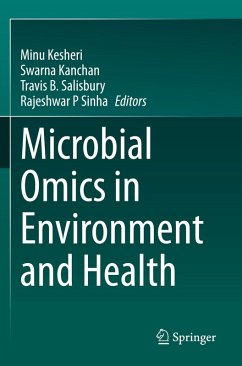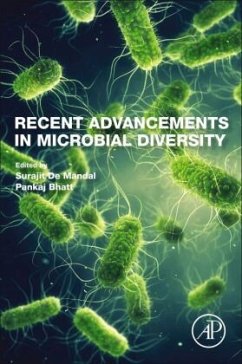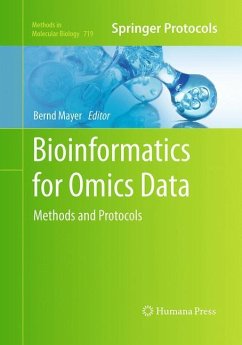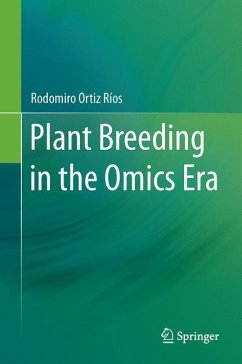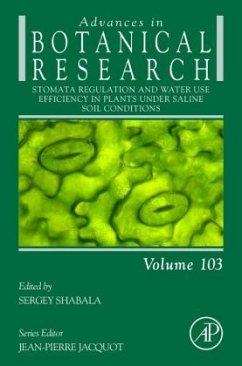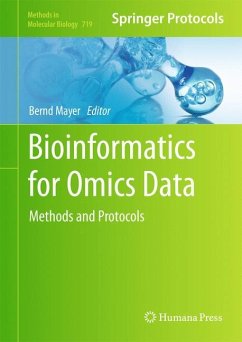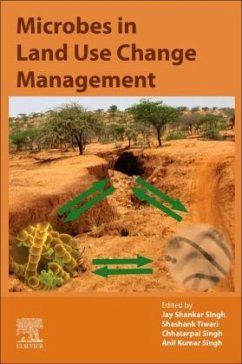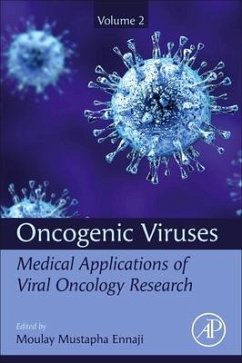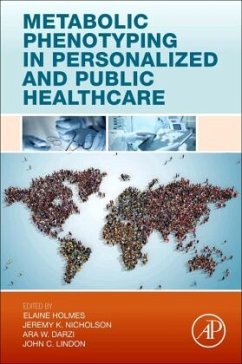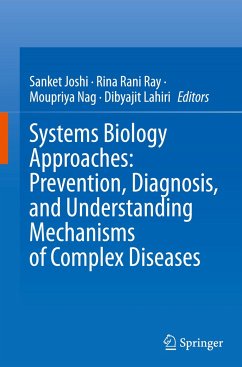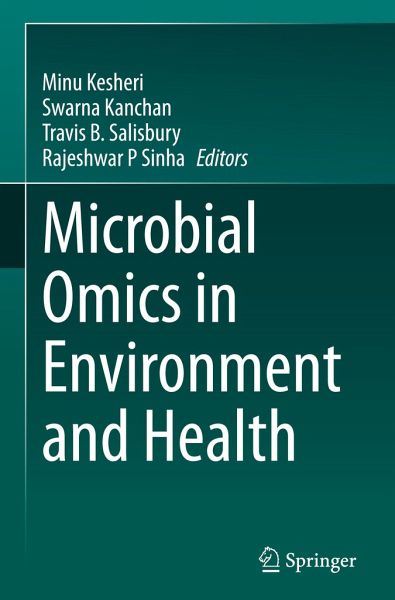
Microbial Omics in Environment and Health

PAYBACK Punkte
68 °P sammeln!
This book describes the basic concepts and recent advances in new discoveries and technologies related to microbial omics and their role in environmental research and human health. The term "omics" refers to a blend of high-throughput analysis and traditional methods including genomics, transcriptomics, proteomics, lipidomics and metabolomics for a variety of applications in the field of life sciences, biomedical sciences, environmental sciences, and related industries. The book aims to fill the existing gap in terms of a comprehensive approach that incorporates recent advances in this dynamic...
This book describes the basic concepts and recent advances in new discoveries and technologies related to microbial omics and their role in environmental research and human health. The term "omics" refers to a blend of high-throughput analysis and traditional methods including genomics, transcriptomics, proteomics, lipidomics and metabolomics for a variety of applications in the field of life sciences, biomedical sciences, environmental sciences, and related industries. The book aims to fill the existing gap in terms of a comprehensive approach that incorporates recent advances in this dynamic field and provides an answer to why this field requires an interdisciplinary research approach.
The focus of this book is on the applications of genomics, epigenomics, metagenomics, integrative omics, machine learning and microbiome research in environmental health, disease, wastewater epidemiology, antibiotic resistance, drug discovery, cancer, production of secondary metabolites of microbial origin, oxidative stress alleviating mechanisms, etc. The overall construction of this book emphasizes three major perspectives, namely, elaborate knowledge from fundamentals to recent advances in technologies about omics in general and its application in microbiology, environment, and health in particular; illustrative figures capable of easy visualization of complex pathways; and serving as a platform for highly demanded bioinformatics strategies including relevant codes, programming scripts, machine learning and use of artificial intelligence strategies needed to streamline the research outcomes. With global contributions from authors from internationally renowned organizations who excel in relevant research, this book will benefit bibliophiles and prospective audiences from the research fraternity, academia, professionals, and experts in the field of life sciences, biomedical as well as industries related to the development of drug design and novel advances in biotechnological applications.
The focus of this book is on the applications of genomics, epigenomics, metagenomics, integrative omics, machine learning and microbiome research in environmental health, disease, wastewater epidemiology, antibiotic resistance, drug discovery, cancer, production of secondary metabolites of microbial origin, oxidative stress alleviating mechanisms, etc. The overall construction of this book emphasizes three major perspectives, namely, elaborate knowledge from fundamentals to recent advances in technologies about omics in general and its application in microbiology, environment, and health in particular; illustrative figures capable of easy visualization of complex pathways; and serving as a platform for highly demanded bioinformatics strategies including relevant codes, programming scripts, machine learning and use of artificial intelligence strategies needed to streamline the research outcomes. With global contributions from authors from internationally renowned organizations who excel in relevant research, this book will benefit bibliophiles and prospective audiences from the research fraternity, academia, professionals, and experts in the field of life sciences, biomedical as well as industries related to the development of drug design and novel advances in biotechnological applications.



